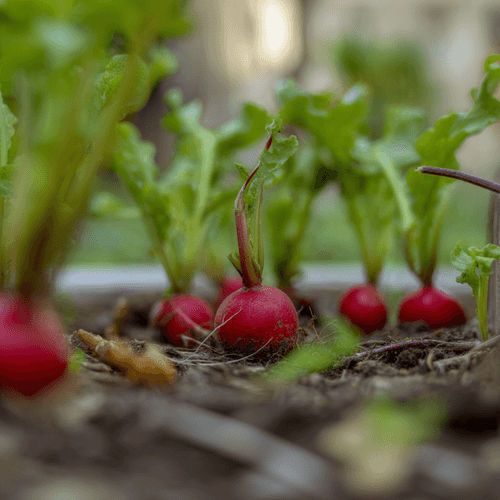Did you know ?
- 1 Radish leaves are edible and nutritious.
- 2 In Oaxaca, Mexico, there’s a festival called “Night of the Radishes.”
- 3 Radishes can be red, white, purple, pink, or even black.

Radishes are crisp, peppery root vegetables enjoyed raw or cooked in cuisines worldwide. Available in many shapes and colors, they are low in calories and rich in nutrients.
Did you know ?
View other Root vegetables
Nutrition
| Calories | 18 kcal |
| Proteins | 0.8g |
| Carbohydrates | 3.9g |
| of which sugars | 2.2g |
| Fiber | 1.9g |
| Fats | 0.1g |
Ripeness
Selection
Storage and ripening
Radishes should be harvested at peak maturity; they do not ripen after picking
Health
Origin
Radishes are believed to have originated in Southeast Asia and have been cultivated since ancient times. They spread to Egypt, Greece, and Rome, where they became a staple vegetable. Today, radishes are grown worldwide and are especially popular in Asian and European cuisines.
Recipes
Gallery
There is no images yet. Submit one now to contribute to the gallery !
F.A.Q
Warnings
Larger, milder, and white or purple; denser texture and less peppery.
Sweeter, dark red, and earthy; not spicy or peppery.
Much hotter, used as a condiment, and not eaten raw as a root vegetable.